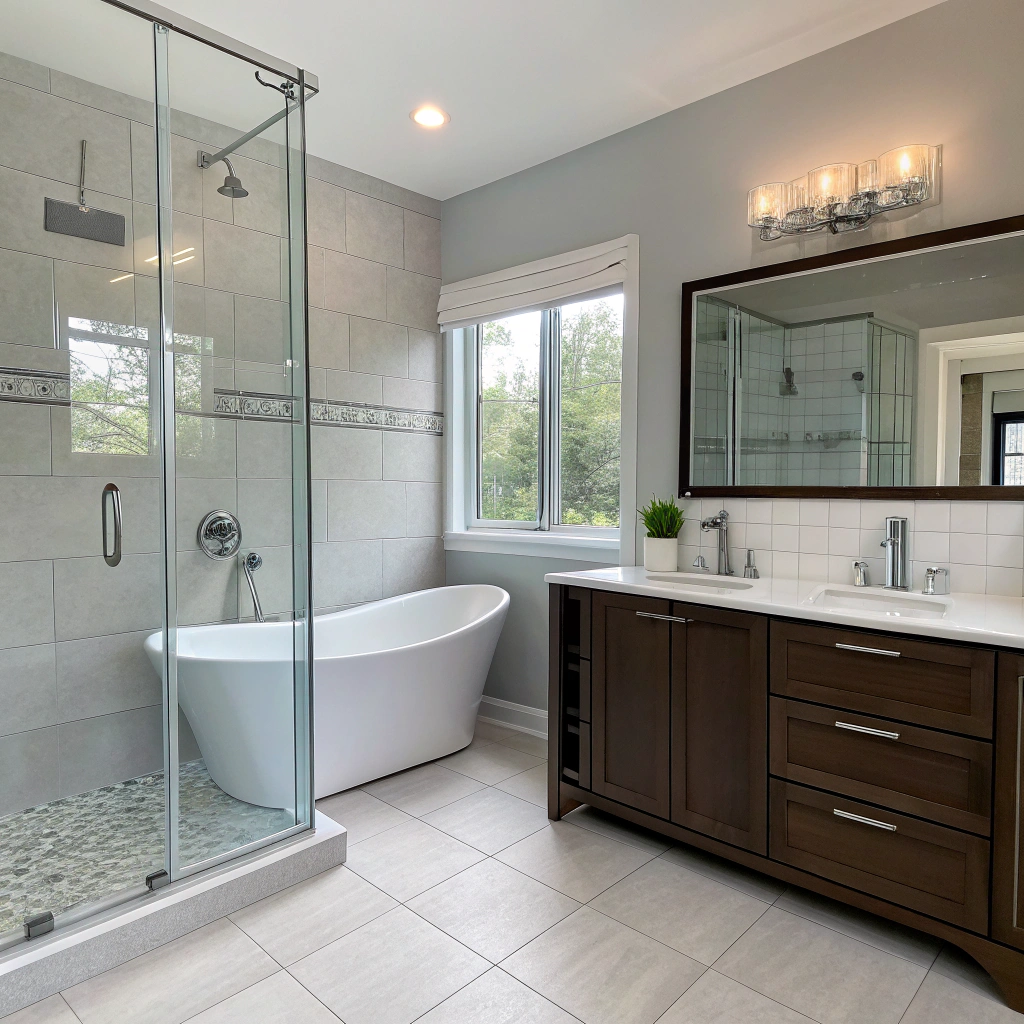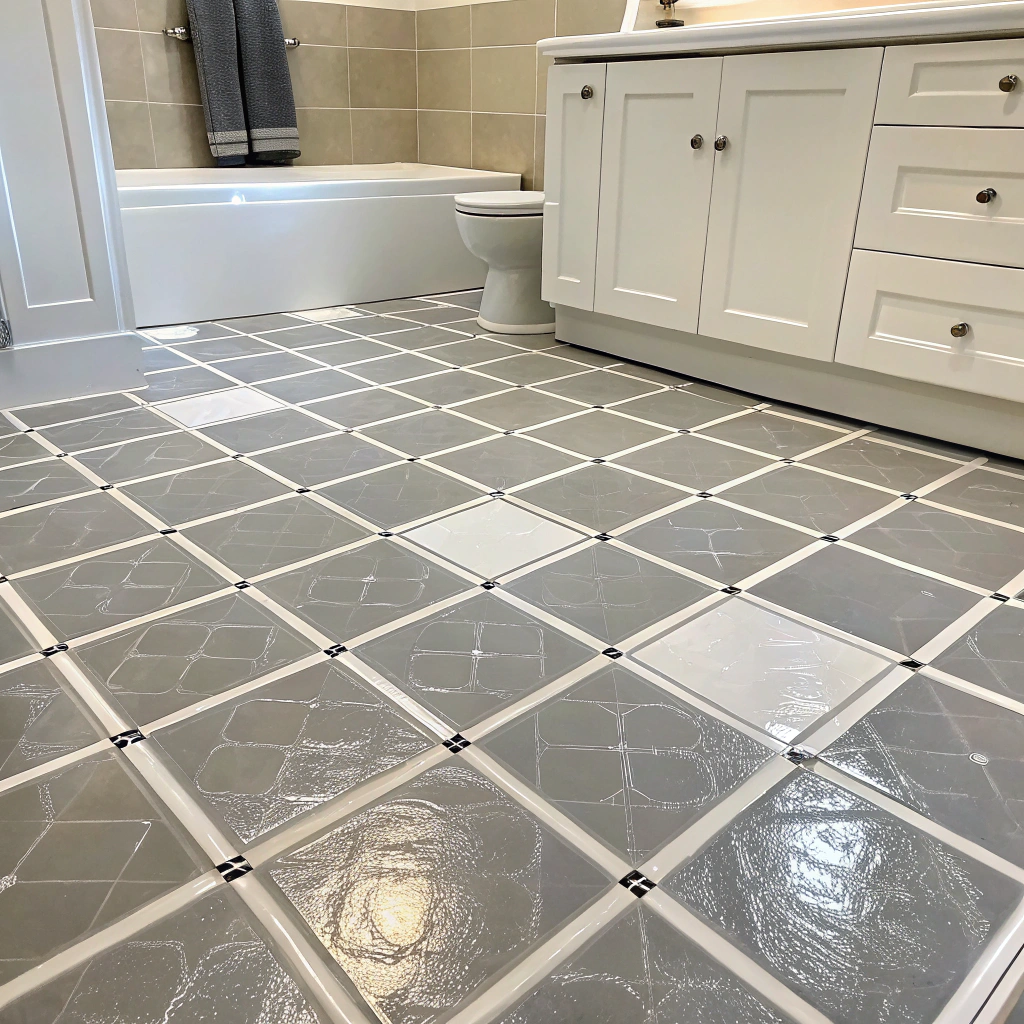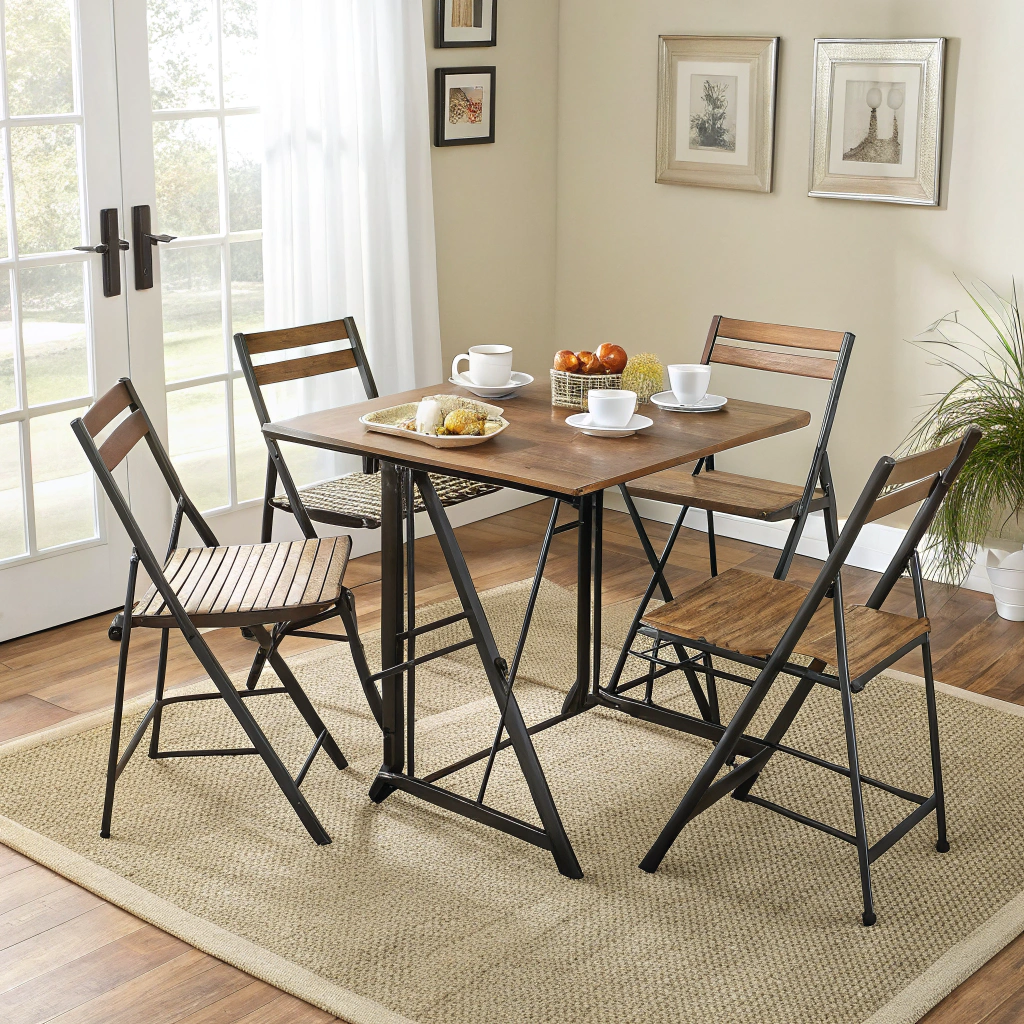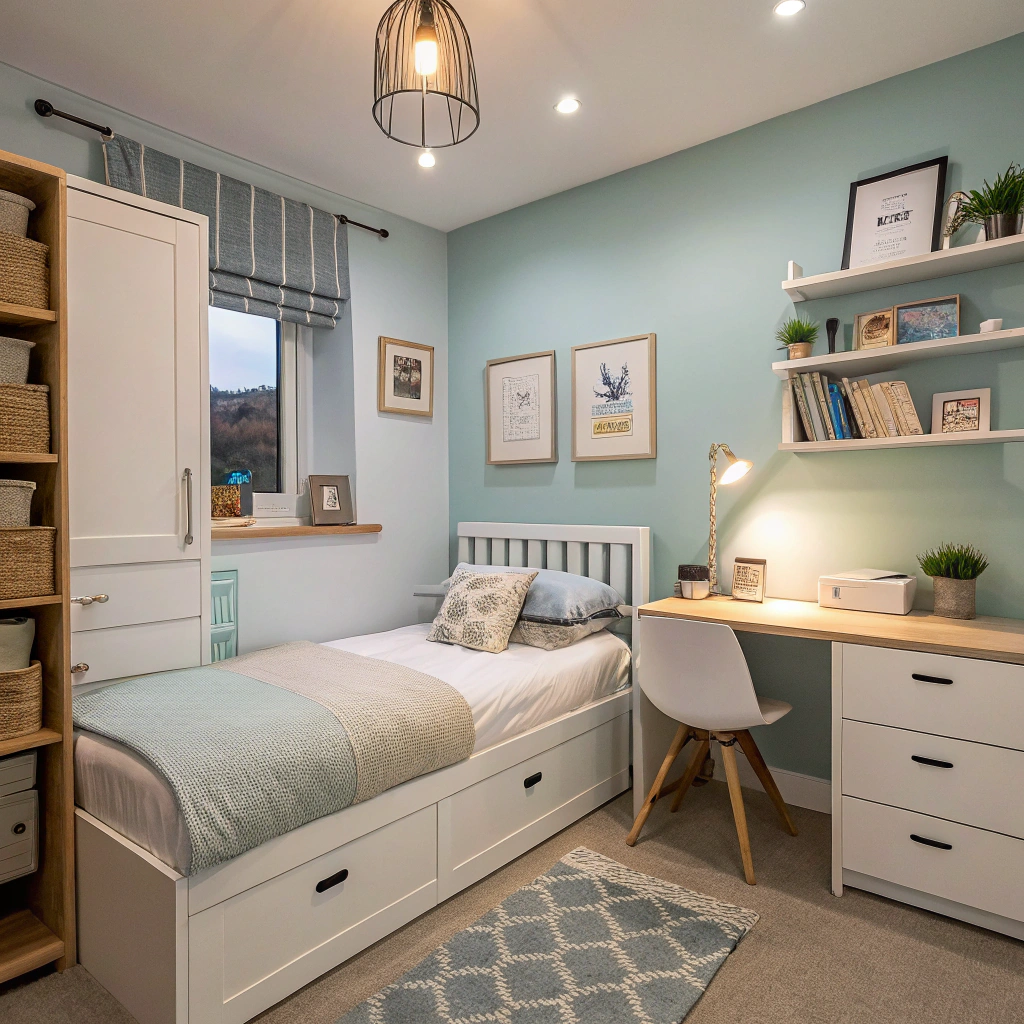Introduction
Ever step onto a cold, slick tile first thing in the morning and think, “There has to be a better way”? You’re not alone. I’ve been there, both as a DIYer in my first home and as a designer consulting with countless clients. Your choice of bathroom floor tiles is one of the most critical decisions you’ll make. It’s the foundation of your entire design, impacting not just the look but the safety and feel of the space. It’s where style meets practicality. In this guide, I’ll cut through the overwhelm and walk you through the best materials that deliver on both fronts, so you can create a bathroom that’s as safe as it is stunning.
Navigating Your Tile Options: A Designer’s Breakdown

Let’s be real: walking into a tile showroom can feel like information overload. So many colors, textures, and materials! But here’s the thing—it all boils down to a few key players. I’ve laid them all (sometimes literally!) and can give you the real-world scoop.
Porcelain & Ceramic: The All-Star Champions
Honestly, if you’re looking for a workhorse that won’t break the bank, this is your go-to. Most people use these terms interchangeably, but there’s a key difference.
- Ceramic tiles are made from red or white clay fired in a kiln. They’re softer, easier to cut (a dream for DIY projects!), and generally more affordable.
- Porcelain tiles are made from a denser clay fired at higher temperatures. This makes them incredibly hard, durable, and nearly impervious to water.
Pro Tip: For bathroom floors, I almost always lean toward porcelain. Its low porosity means it resists moisture, mildew, and stains much better—a non-negotiable for a wet environment. The first time I used a large-format porcelain tile in a client’s small bathroom, it instantly made the space feel larger and more seamless. Plus, modern printing technology means porcelain can stunningly mimic wood, concrete, or natural stone.
Natural Stone: Unmatched Luxury & Character
Want to inject instant elegance and organic texture? Natural stone is your answer. From the timeless veining of marble to the pebbled texture of slate, each piece is utterly unique.
- Marble & Granite: The classics. They’re breathtakingly beautiful but require a bit of babysitting. They need to be sealed upon installation and resealed periodically to prevent etching and staining.
- Slate & Travertine: These offer more natural texture, which is fantastic for slip resistance. I used slate in a family bathroom remodel, and the clients loved how the textured surface provided peace of mind for their kids.
Here’s the catch: Stone can be pricey, cold underfoot, and requires maintenance. It’s a commitment, but oh, what a payoff.
Vinyl & Linoleum: The Underrated Superstars
Before you turn up your nose, hear me out. Today’s luxury vinyl tile (LVT) and sheet vinyl are not your grandmother’s flooring. We’re talking about 100% waterproof, incredibly soft and warm underfoot, and designs so realistic you have to touch them to believe they’re not wood or stone.
I recommend this all the time for renters or families on a tight budget. It’s a brilliant, affordable way to get a high-end look with ultimate practicality. It’s also a godsend for anyone who wants a softer landing pad.
Concrete & Terrazzo: For the Industrial Chic Lover
Feeling bold? Polished concrete or terrazzo (chips of marble or glass set in concrete and polished smooth) makes a serious design statement. It’s ultra-durable and seamlessly modern. The key here is to ensure it’s properly sealed and to embrace its inherently cool feel—both in temperature and style! It’s not for everyone, but in the right space, it’s pure magic.
Your Decision Checklist: Style, Safety, and Budget
Choosing the right tile isn’t just about picking the prettiest sample. You’ve got to weigh a few key factors. Think of it like a recipe—you need the right balance of ingredients.
- Slip Resistance (The Coefficient of Friction): This is the big one for safety. Look for a tile rated for floors, and don’t be shy about asking a salesperson for its DCOF (Dynamic Coefficient of Friction) rating. A higher number means more grip. Textured, matte, or honed finishes are your friends here. Glossy, polished tiles can become a skating rink when wet.
- Durability & Maintenance: How much effort are you willing to put in? Porcelain is virtually carefree, while natural stone demands a relationship. Be honest with yourself about your cleaning habits!
- Budget: Factor in not just the cost of the tile itself, but also installation (which can vary wildly depending on the material) and any ongoing maintenance products like sealers.
- Style & Size: Larger tiles can make a small bathroom feel bigger with fewer grout lines. Darker tiles can hide dirt, while lighter ones can brighten a space. It’s all about the vibe you want to create.
Let’s Get Practical: My Go-To Recommendations
Based on years of experience, here’s my quick-hit guide:
- Best for Families & High Traffic: Textured Porcelain
- Best for Luxury & Spa-Like Feel: Honed Marble or Large Slate Tiles
- Best for Budget & DIY Ease: Luxury Vinyl Plank/Tile or Ceramic
- Best for Slip Resistance: Textured Stone (Slate, Tumbled Travertine) or Vinyl with a textured finish
You’ve Got This!
Remember, your bathroom floor tiles set the stage for everything else. There’s no single “right” answer—only the right answer for your home, lifestyle, and taste. Don’t be afraid to order samples and see them in your own light. Live with them for a day.
I’d love to hear from you! Which material are you leaning toward for your bathroom refresh? Drop your questions or plans in the comments below—let’s chat!
Bathroom Floor Tiles FAQ
What is the most slip-resistant bathroom floor tile?
Textured natural stone like slate or tumbled travertine is naturally slip-resistant. For porcelain, look for a matte or textured finish with a high DCOF rating (above 0.42 is recommended for level interior floors wet with water).
Can you use wood-look tiles in a bathroom?
Absolutely! In fact, porcelain wood-look tiles are one of my favorite tricks. You get the warm, cozy aesthetic of wood with the waterproof durability of porcelain. It’s the best of both worlds.
What is the cheapest option for bathroom floor tiles?
Sheet vinyl is typically the most budget-friendly option upfront. Ceramic tile is also a very cost-effective choice, especially if you’re handy and can tackle the installation yourself.
How often do natural stone tiles need to be sealed?
It depends on the stone and usage, but a good rule of thumb is to reseal most natural stone tiles every 1-3 years. You can test if sealing is needed by sprinkling a few drops of water on the surface. If it darkens or absorbs quickly, it’s time to reseal.
Is it okay to use large-format tiles in a small bathroom?
Yes! Using larger tiles can actually make a small bathroom appear bigger because there are fewer grout lines to break up the visual space. Just ensure your installer is experienced with large-format tiles, as they require a perfectly level subfloor.







Leave a Reply